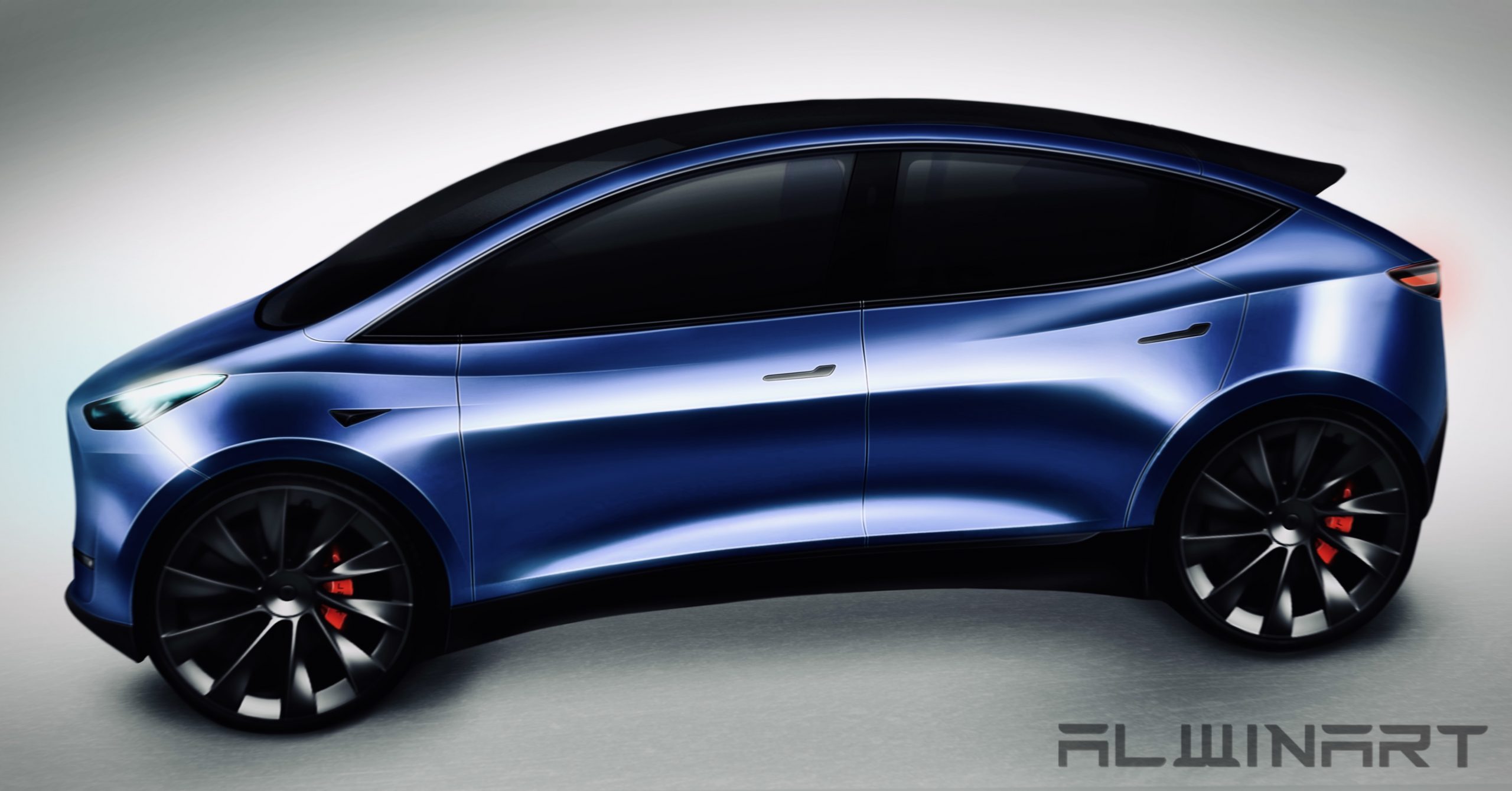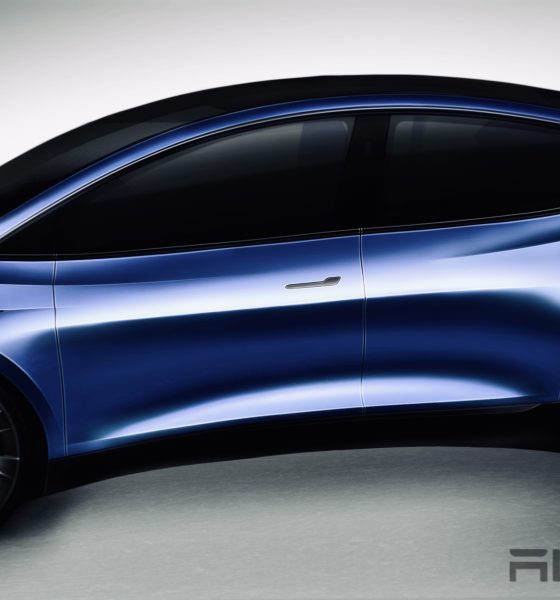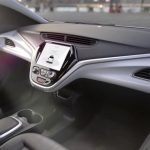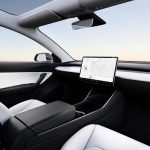

News
Tesla’s $25k car gets update on its final name, options, and potential release date
During a recent all-hands meeting, Tesla CEO Elon Musk provided some updates on one of the company’s most ambitious vehicles yet: the ~$25,000 compact car. As per information shared by individuals familiar with the items discussed in the meeting, Musk clarified that the upcoming vehicle would not be named the “Model 2,” but it could be a car designed for Full Self-Driving with no steering wheel or physical pedals.
EV blog Electrek, citing individuals who were also at the recently-held all-hands meeting, further claimed that the $25,000 compact car has a tentative release date of 2023. This is notably conservative as previous reports from China hint that work on an affordable Tesla is already underway. Earlier this year, local reports from Chinese media outlets hinted that a vehicle that’s more affordable than the Model 3 would likely start testing at the latter half of the year.
• Tesla won't call the $25k model the "Model2". "Only did Model 3 cause Ford had model E trademark so we just did model 3 to troll them"— Sawyer Merritt (@SawyerMerritt) September 3, 2021
More recent reports from the world’s largest EV market hinted that a prototype of the affordable Tesla had also been completed, and most suppliers for the upcoming vehicle had already been lined up. Considering Musk’s recent comments at the hands-on meeting, it almost seems like Tesla is building two affordable all-electric cars: a more traditional compact EV that would be released in China and another low-cost car that’s primarily designed for Full Self-Driving in the United States. Both vehicles have the potential to be disruptive in their own way.
An affordable Tesla in China — particularly one that is reportedly based on the Model 3 platform — would likely be a substantial hit among budget-conscious buyers who are looking to get the most out of their vehicle purchase. Tesla tends to equip its cars with a robust set of standard features, and its vehicles typically offer performance that’s far above their price point. These, together with the convenience offered by the Supercharger Network, would likely allow Tesla’s affordable car in China to be competitive in the country’s local market.
- A Chevy Bolt with no steering wheel or physical pedals. (Credit: Cruise Automation)
- A Tesla Model 3 with no steering wheel. (Credit: Tesla)
A low-cost pure FSD car for the United States would also have some potential. Assuming that Tesla could indeed develop a fully autonomous solution for its vehicles, a fleet of affordable Robotaxis would definitely make sense. Such an idea is not that wild either, considering that GM’s Cruise debuted the exact same concept back in 2018. During that time, Cruise showed off a concept of a Chevy Bolt EV that has no steering wheel or physical pedals. Cruise was targeting a 2019 rollout for the vehicle then, though such a target was not met. Tesla also unveiled a similar concept for the Model 3 back in 2019 when it held its Autonomy Day event.
Tesla’s affordable car is the next big project for Elon Musk and his team. Producing a mass-market car like the Model 3 profitably is no joke, after all, but rolling out an affordable car that could still turn a profit would be an even more challenging undertaking. If Tesla could pull it off, however, the company could effectively cement its place as this generation’s premier vehicle maker, and a company that holds the key to true autonomous driving.
Don’t hesitate to contact us with account tips. Just send a message to tips@teslarati.com to give us a heads up.

News
Tesla FSD fleet is nearing 7 billion total miles, including 2.5 billion city miles
As can be seen on Tesla’s official FSD webpage, vehicles equipped with the system have now navigated over 6.99 billion miles.

Tesla’s Full Self-Driving (Supervised) fleet is closing in on almost 7 billion total miles driven, as per data posted by the company on its official FSD webpage.
These figures hint at the massive scale of data fueling Tesla’s rapid FSD improvements, which have been quite notable as of late.
FSD mileage milestones
As can be seen on Tesla’s official FSD webpage, vehicles equipped with the system have now navigated over 6.99 billion miles. Tesla owner and avid FSD tester Whole Mars Catalog also shared a screenshot indicating that from the nearly 7 billion miles traveled by the FSD fleet, more than 2.5 billion miles were driven inside cities.
City miles are particularly valuable for complex urban scenarios like unprotected turns, pedestrian interactions, and traffic lights. This is also the difference-maker for FSD, as only complex solutions, such as Waymo’s self-driving taxis, operate similarly on inner-city streets. And even then, incidents such as the San Francisco blackouts have proven challenging for sensor-rich vehicles like Waymos.
Tesla’s data edge
Tesla has a number of advantages in the autonomous vehicle sector, one of which is the size of its fleet and the number of vehicles training FSD on real-world roads. Tesla’s nearly 7 billion FSD miles then allow the company to roll out updates that make its vehicles behave like they are being driven by experienced drivers, even if they are operating on their own.
So notable are Tesla’s improvements to FSD that NVIDIA Director of Robotics Jim Fan, after experiencing FSD v14, noted that the system is the first AI that passes what he described as a “Physical Turing Test.”
“Despite knowing exactly how robot learning works, I still find it magical watching the steering wheel turn by itself. First it feels surreal, next it becomes routine. Then, like the smartphone, taking it away actively hurts. This is how humanity gets rewired and glued to god-like technologies,” Fan wrote in a post on X.
News
Tesla starts showing how FSD will change lives in Europe
Local officials tested the system on narrow country roads and were impressed by FSD’s smooth, human-like driving, with some calling the service a game-changer for everyday life in areas that are far from urban centers.

Tesla has launched Europe’s first public shuttle service using Full Self-Driving (Supervised) in the rural Eifelkreis Bitburg-Prüm region of Germany, demonstrating how the technology can restore independence and mobility for people who struggle with limited transport options.
Local officials tested the system on narrow country roads and were impressed by FSD’s smooth, human-like driving, with some calling the service a game-changer for everyday life in areas that are far from urban centers.
Officials see real impact on rural residents
Arzfeld Mayor Johannes Kuhl and District Administrator Andreas Kruppert personally tested the Tesla shuttle service. This allowed them to see just how well FSD navigated winding lanes and rural roads confidently. Kruppert said, “Autonomous driving sounds like science fiction to many, but we simply see here that it works totally well in rural regions too.” Kuhl, for his part, also noted that FSD “feels like a very experienced driver.”
The pilot complements the area’s “Citizen Bus” program, which provides on-demand rides for elderly residents who can no longer drive themselves. Tesla Europe shared a video of a demonstration of the service, highlighting how FSD gives people their freedom back, even in places where public transport is not as prevalent.
What the Ministry for Economic Affairs and Transport says
Rhineland-Palatinate’s Minister Daniela Schmitt supported the project, praising the collaboration that made this “first of its kind in Europe” possible. As per the ministry, the rural rollout for the service shows FSD’s potential beyond major cities, and it delivers tangible benefits like grocery runs, doctor visits, and social connections for isolated residents.
“Reliable and flexible mobility is especially vital in rural areas. With the launch of a shuttle service using self-driving vehicles (FSD supervised) by Tesla in the Eifelkreis Bitburg-Prüm, an innovative pilot project is now getting underway that complements local community bus services. It is the first project of its kind in Europe.
“The result is a real gain for rural mobility: greater accessibility, more flexibility and tangible benefits for everyday life. A strong signal for innovation, cooperation and future-oriented mobility beyond urban centers,” the ministry wrote in a LinkedIn post.
News
Tesla China quietly posts Robotaxi-related job listing
Tesla China is currently seeking a Low Voltage Electrical Engineer to work on circuit board design for the company’s autonomous vehicles.

Tesla has posted a new job listing in Shanghai explicitly tied to its Robotaxi program, fueling speculation that the company is preparing to launch its dedicated autonomous ride-hailing service in China.
As noted in the listing, Tesla China is currently seeking a Low Voltage Electrical Engineer to work on circuit board design for the company’s autonomous vehicles.
Robotaxi-specific role
The listing, which was shared on social media platform X by industry watcher @tslaming, suggested that Tesla China is looking to fill the role urgently. The job listing itself specifically mentions that the person hired for the role will be working on the Low Voltage Hardware team, which would design the circuit boards that would serve as the nervous system of the Robotaxi.
Key tasks for the role, as indicated in the job listing, include collaboration with PCB layout, firmware, mechanical, program management, and validation teams, among other responsibilities. The role is based in Shanghai.
China Robotaxi launch
China represents a massive potential market for robotaxis, with its dense urban centers and supportive policies in select cities. Tesla has limited permission to roll out FSD in the country, though despite this, its vehicles have been hailed as among the best in the market when it comes to autonomous features. So far, at least, it appears that China supports Tesla’s FSD and Robotaxi rollout.
This was hinted at in November, when Tesla brought the Cybercab to the 8th China International Import Expo (CIIE) in Shanghai, marking the first time that the autonomous two-seater was brought to the Asia-Pacific region. The vehicle, despite not having a release date in China, received a significant amount of interest among the event’s attendees.










